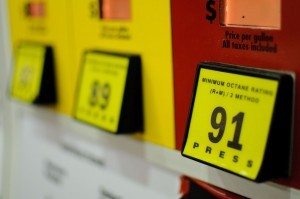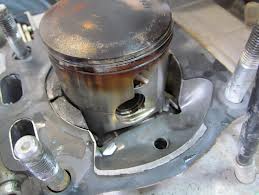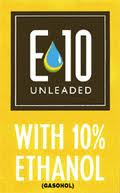
What Octane Rating Do You Think You Need?
Not all fuel is created equal, and not all vehicles can run on the same type of fuel. As a result, octane ratings were established to classify the different qualities of fuel into distinct performance categories. And it’s this octane rating that ultimately determines what we put into our fuel tanks daily. Therefore, it’s essential you know the ins and outs of what octane ratings mean. More importantly the effects they can have on your bike.
What Is Octane?
Hydrocarbon chains account for a vast majority of fuels. These chains are split apart and “rearranged” to form different types of fuel. Methane, butane, propane, and octane are all derivatives of this breaking up and rearranging of hydrocarbons.
You can guess by its name that OCTane fuel consists of eight carbons. But what you may not know is that the fuel we use in our engines also contains heptane (seven carbons). And it’s the mixture of octane and heptane that starts to define the octane rating of the fuel.
What Are Octane Ratings?
The numbers you see in gasoline ratings (87, 91, 95, and up) coincide with the percentage ratios of octane-to-heptane (or, in some instances, other combinations of fuels). Therefore, an 87 octane rating represents the fuel that consists of 87% octane and 13% heptane. Ergo, 91-octane fuel is 91% octane and 9% heptane. But what’s the significance of the two?
How Do These Ratings Affect Engines?
Octane can handle compression much better than heptane can. As a result, the two are combined to control the compression level of the fuel. This is essential to an engine’s performance.
When fuel ignites by compression rather than by the spark created by the spark plug, knocking occurs in the engine. Knocking leads to various engine issues, which could ultimately lead to engine replacement.
The type of fuel that can be used in your vehicle is determined by the compression ratio of the vehicle’s engine. Most standard cars and trucks have a lower compression ratio. This means that “regular” 87-octane fuel can be used in them.
On the flip side, high-performance vehicles (such as many of the dirt bikes we ride) have a higher compression ratio, which means a higher rated premium octane rating is needed to maximize its efficiency and power. The higher the compression ratio on the motor, the higher the horsepower (usually). Higher compression requires a higher octane rating.
A Quick Word (of Caution) On Octane & Ethanol

In recent years, ethanol-blended fuel has become a regular staple at gas stations and is seen in fuel more frequently than ever before. Ethanol acts as an oxidizer for the fuel allowing it to burn more fully during combustion. And while most late-model vehicles have no problems using the blend, there are still some potential dangers of using it, especially in older vehicles and two-stroke engines.
The problem with ethanol is that it absorbs water. In the case of long-term storage, ethanol can absorb moisture from the atmosphere. This creates a reservoir of water and ethanol at the bottom of your fuel cell. And when the engine turns over, the first thing to get sucked up into it is that water/ethanol blend. And in the engine world, that can mean an early death.
On top of engine damage, prolonged use of ethanol can lead to corrosion in the fuel system and carburetor. Avoid ethanol as much as reasonably possible.
Now You Can Make An Informed Decision
So, you now know that octane gas is made up of heptane and octane, that the octane rating reflects the percentages of the ratio of each, that 87 octane is for standard vehicles and 91-octane for high-performance vehicles, and ethanol and octane gas are never a good combination, regardless of the octane rating.
Now, you should be able to choose the type of gasoline you want to use in your bike with more confidence. And if by chance, you’re still not sure, then you can always check with your dirt bike owner’s manual. It should tell you which octane rating is best for your engine (most likely not ethanol).
If you have any questions or anything to add, please leave them in the comments or on our FaceBook page!
Keep Reading – Ethanol Damages 2-Stroke Engines

